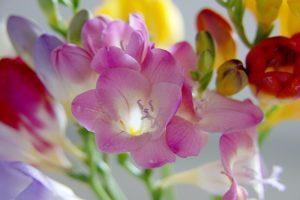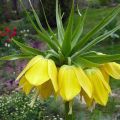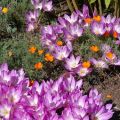Planting and caring for sparaxis in the open field, the best species and varieties
Herbaceous bulbous perennials are loved by all flower growers; such plants adorn areas for many years. Recently, the traditional views for our country have been supplemented by guests from overseas countries, possessing exotic charm, special brightness and chic. Consider how to grow sparaxis in the open field - features of planting and care, the necessary conditions under which a heat-loving flower will feel at home.
General description and characteristics of the sparaxis flower
Sparaxis is a member of the Iris family and belongs to the genus of corms. In nature, it is found only in southern Africa, where it blooms along the banks of reservoirs. One species (Sparaxis tricolor) was introduced to California.
In African conditions, sparaxis grows up to a meter, but when transferred to our latitudes, it gives a peduncle 50-60 centimeters high. Sparaxis characteristics:
- The root rosette consists of smooth lanceolate foliage of a rich green color, like many irises.
- Corm.
- Dwarf species grow up to 15 centimeters, the rest - 50-60 centimeters.
- Flowers up to 5 centimeters in diameter. The shape is stellate or funnel-shaped. Pistil pronounced, strongly protruding, 3 stigmas. The color of the petals in most with contrasting transitions.
The flowers are not large, but the pronounced contrast in color makes the blooming sparaxis the main decoration of any site. The petals are painted in 2-3 colors, the transitions seem to be drawn with clear lines. The color is varied - yellow, orange, purple, white.
In conditions close to African ones, sparaxis blooms in spring and pleases with a riot of colors all summer long. In the realities of the Middle Lane, with the need to extract the bulbs from the soil for the winter, flowering begins at the end of summer.
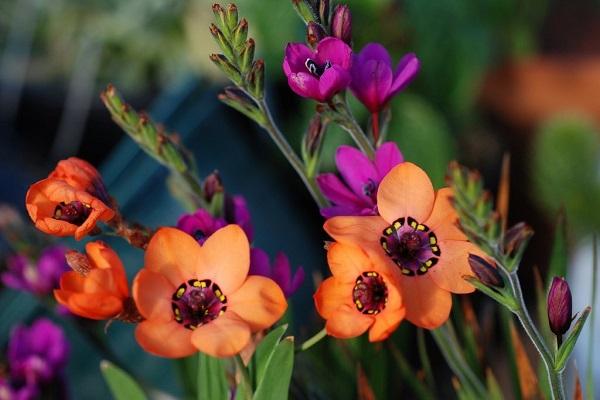
Types and varieties
For selection, 4 of the most decorative types of sparaxis are used, the total number of varieties is greater. The breeders managed to create varieties with bright contrasting color combinations - from white to deep purple, the color of the perianths combines 3 colors.
The following varieties are the leaders in popularity:
- Bilbeefer. The least whimsical of all sparaxis, with narrow petals of white or lemon yellow. The petals are distant from each other, do not touch. The group creates openwork light compositions of a monochrome look. Diameter - 5 centimeters, height - up to 60 centimeters.
- Tricolor, tricolor. The favorite of flower growers combines 3 contrasting colors in the petals. Usually tricolor is sold as a mix with different petal colors.The peduncle bears 5-7 buds, which bloom in turn.
- Grandiflora. Flowers of remarkable beauty with a bracts that match the tone of the petals, have a pleasant aroma. On the peduncle - from 3 to 5 buds of white, purple or yellow color.
- Elegant. This species is dwarf, grows up to 15 centimeters. The orange color of the petals with a burgundy-purple center is especially popular.
The varieties Sunny Day, Moonlight, Lord of Fire are also loved by flower growers.
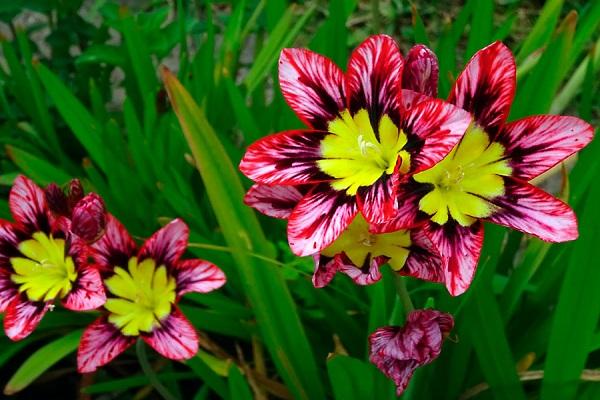
Advantages and disadvantages
The main advantage of sparaxis is the high decorative effect of group plantings. Flowers are planted tightly. Lanceolate greens in the lower part are connected, peduncles are strewn with bright heads of bizarre colors. Small flowers stand out clearly against the background of greenery. Details are drawn with precise strokes, no halftones and blurred spots. The bulbs remain viable for up to 3 years, but they need to be stored properly.
A significant drawback of sparaxis is that the plant is exotic, and the conditions of most Russian regions are far from African ones. Florists have to create special conditions for the plant, as a result of which flowering moves to the end of summer. Only in the southernmost regions can bulbs overwinter in the soil, the beds still need to be mulched. You can only grow sparaxis from seeds in stationary greenhouses.
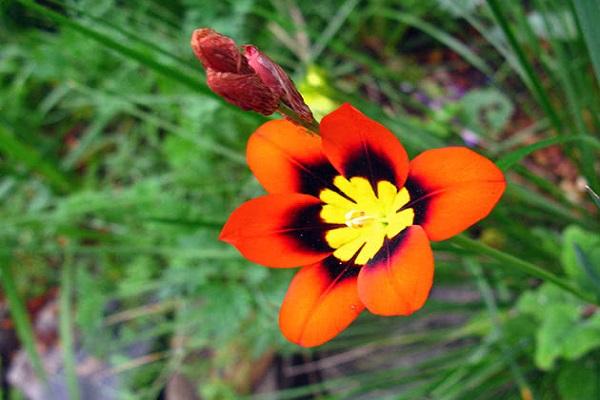
The subtleties of growing an ornamental culture
For those who have mastered planting and caring for gladioli, tulips, irises, it is not difficult to master the agrotechnics of growing sparaxis. The closest relative of everyone's favorite crops is grown according to the same rules.
When and where to plant
For the beds, they choose places lit by the sun without shading, but closed from wind and drafts. Lowlands where water accumulates are not used. The bulb can get wet and rot with excess moisture. For drainage, a layer of expanded clay is used and sand is introduced into the soil mixture. When planting in loamy or sandy loam soils, dilute the soil with organic matter.
On the territory of Russia, the following planting dates for sparaxis are recommended:
- Southern regions, where winter temperatures do not drop below 0 °. End of September, first half of October. The beds are mulched for the winter.
- The middle lane is the end of April, mid-May.
When choosing dates, they are guided by the weather. Stable warmth and warm soil are the main conditions for growth. The bulbs planted in the cold will simply sit in the ground, with an excess of moisture, the roots will begin to rot.
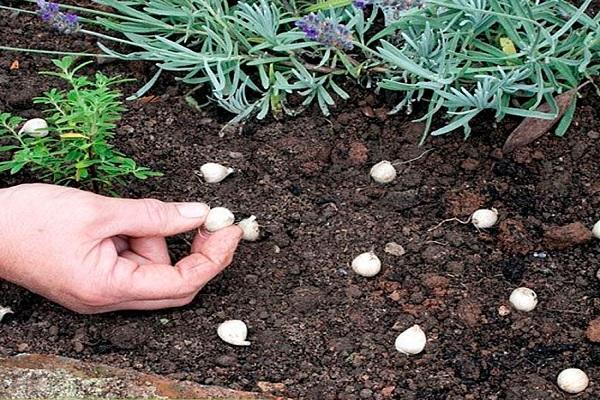
Preparation of seedlings
The bulbs are taken out of storage a few days before planting and transferred to a warm place (25-27 °). The planting material is examined, diseased specimens are discarded. Before planting, you can treat the bulbs with fungicides (Fundazol), growth stimulants (Kornevin) in accordance with the instructions.
How to plant
Sparaxis is planted in soil heated to 18 °, according to the following rules:
- pre-winter sowing - with a depth of 8-10 centimeters;
- spring planting - depth - 5-6 centimeters.
To create beautiful meadows, flowers are planted tightly - at a distance of 8-15 centimeters from each other, depending on the size of the sparaxis bush.
Reference: sparaxis retains its decorative effect for 5-6 years, then the bulbs need to be updated.
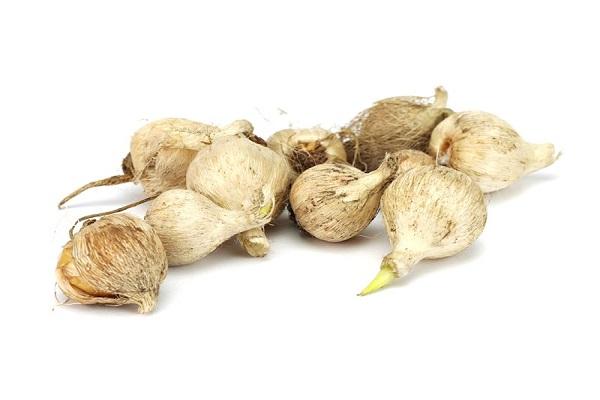
Sparaxis care
They take care of the flower in the same way as for its congeners iris - watered, fed. The aisles are loosened to provide air access, weeds and dead parts of the bushes are removed.
How to water and feed
Watering is carried out in accordance with weather conditions. In the rainy season, water is not allowed to stagnate. In drought, water it 2-3 times a week, preferably in the evening. If it's cool at night, watering is transferred to the morning. At high temperatures, sparaxis is useful with sprinkling when there is no direct sun.
Top dressing rules:
- phosphorus-containing fertilizers - in early spring and after flowering in winter;
- nitrogen - in the spring for the growth of greenery;
- potash - during budding.
During the season, it is recommended to add ash 2-3 times to the sparaxis beds.
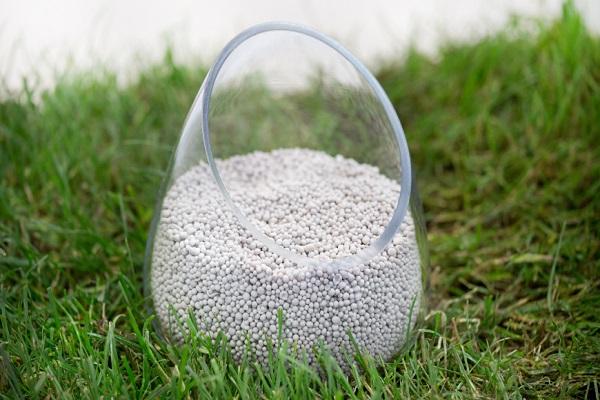
Wintering
To maintain the viability of the bulbs during the winter, a late (after flowering) fertilization of sparaxis with a phosphorus-containing fertilizer is carried out. Further, the plants are no longer watered, they are allowed to dry out in the soil.
The bulbs are dug out without cutting off the greens, soaked in a 2% solution of potassium permanganate for 24 hours. Then they are dried. This will disinfect the planting material, remove mold and rot particles. After waiting for the ground part to dry completely, it is separated from the bulb. Planting material is stored at a temperature of 5-7 ° in sawdust in a dark room. Bulbs are periodically inspected, damaged specimens are removed.
In the southern regions with positive temperatures in winter, the beds of sparaxis are mulched for the winter, covered with a layer of spruce branches. The bulbs hibernate in the soil, so the bush blooms early - in May-June.
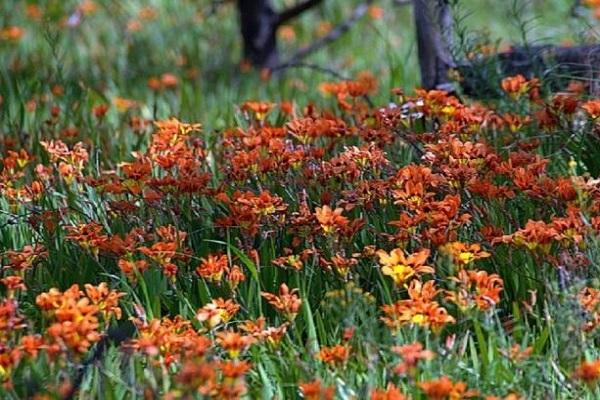
Diseases and pests
Most diseases and pests bypass sparaxis. The danger is waterlogging, which can lead to fungal infections of the bulb. It is necessary to improve the drainage of the beds and normalize watering.
Reproduction of sparaxis
A convenient and quick way of reproduction of sparaxis is the babies that the mother's bulb produces. Rules and subtleties of reproduction:
- corms are removed from the soil after flowering is complete, until the foliage is completely dry;
- baby onions are kept undivided so that they do not lose moisture and do not dry out;
- before planting, the babies are carefully cut off from the mother's bulb, the cut site is treated with activated carbon.
Young seedlings are not allowed to bloom, the peduncles are cut off within 2 years so that the bulb grows.
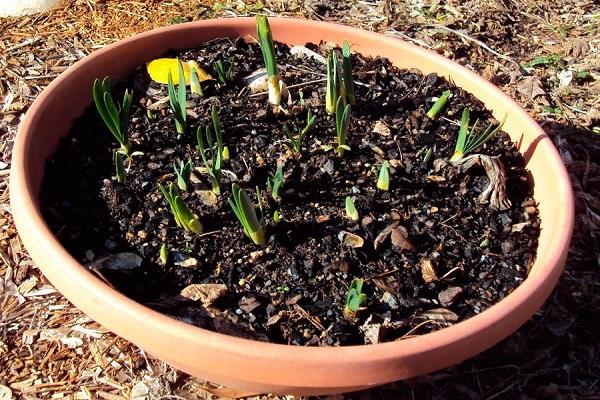
Important: if sparaxis is not required to propagate, the babies are still removed from the mother's bulb so as not to take away nutrients from the peduncle.
Bulbous seed propagation is rarely used - varietal qualities may be lost. The plant blooms from seeds after 3 years, when the bulb matures. Fully ripened and dried sparaxis seeds are planted in a loose substrate to a depth of 1 centimeter.
Ground sowing is possible only in very warm regions; in the Middle Lane, greenhouse cultivation is used. Before transferring to a permanent place, sparaxis must spend 2 years without a transplant; it is impossible to disturb the seedlings earlier.
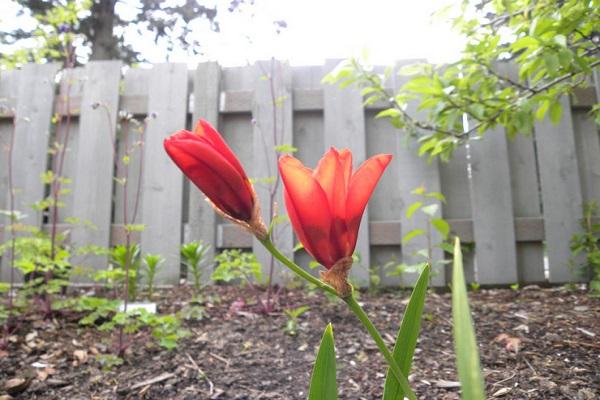
Use in landscape design
Small colorful sparaxis flowers look great in group plantings. In landscape design, the plant is used:
- in combination with ground cover plants - for accent spots;
- around ornamental shrubs;
- in mixborders, rockeries;
- as potted crops for home and garden areas;
- in mono flowers and with other bulbous plants.
Sparaxis stands for a long time in the cut and is used for bouquets.
Despite certain difficulties in growing, florists fell in love with the bright African. Sparaxis brings a riot of colors and exotic notes to the design of the usual flower beds. Refined shades, geometrically traced details of the petals give the areas charm and originality.
